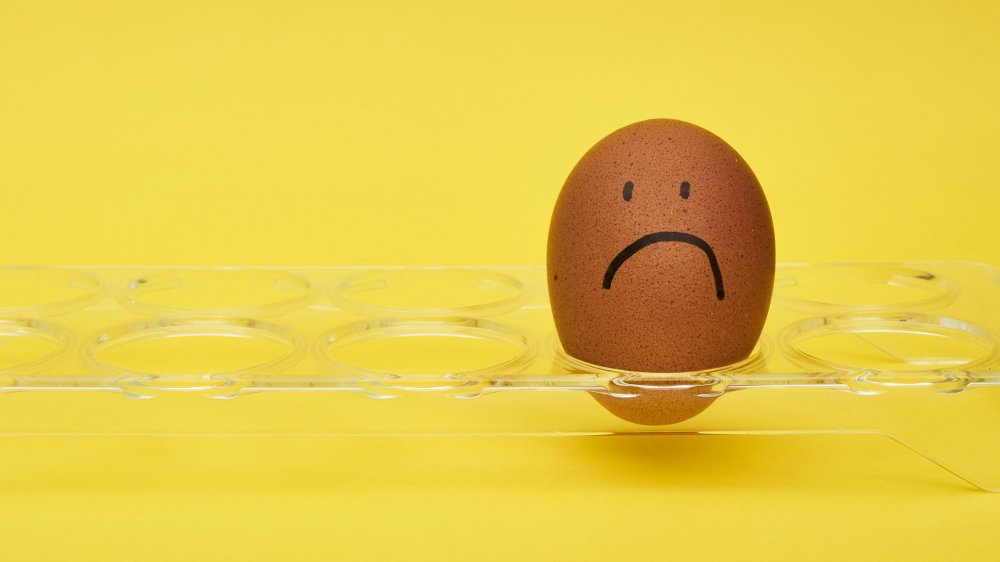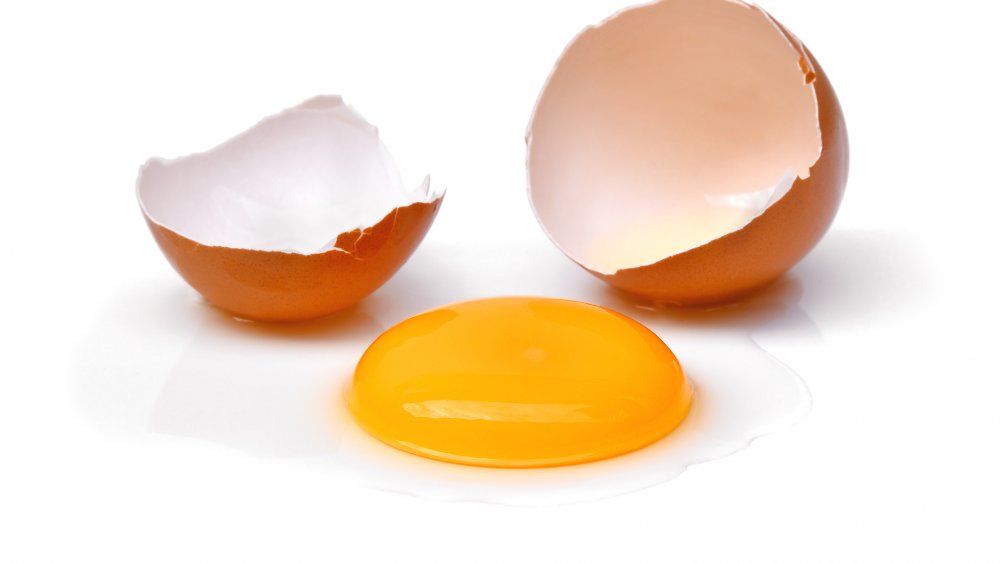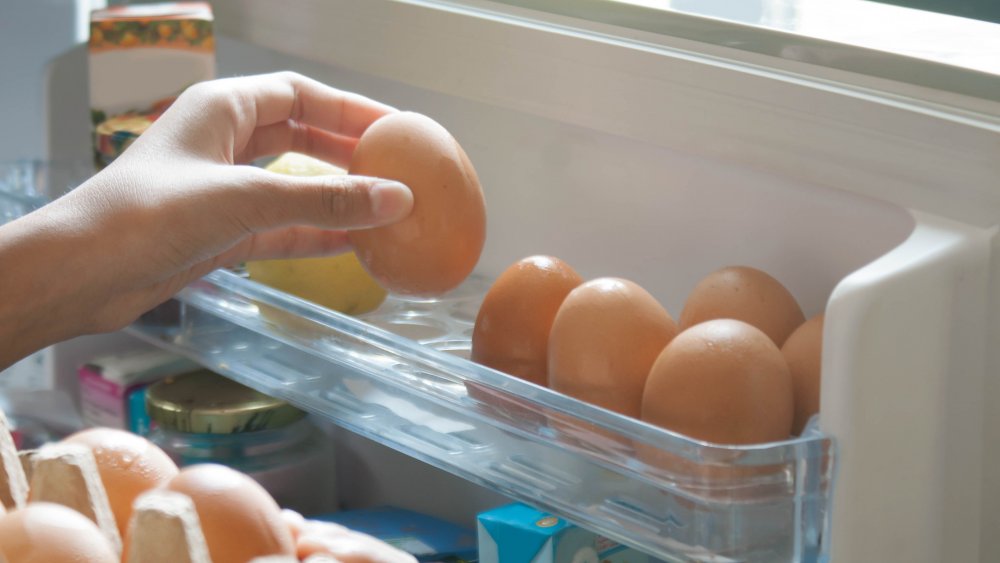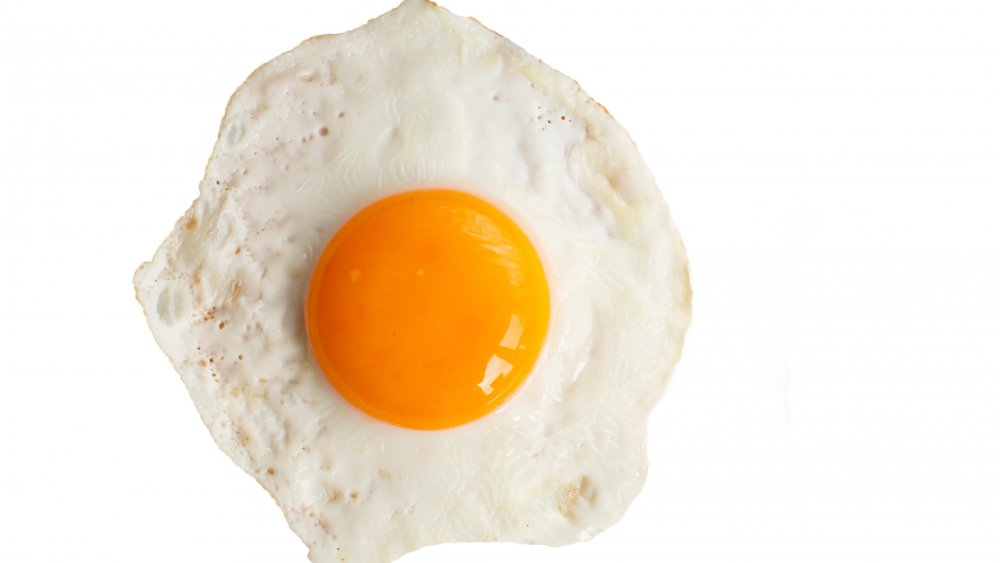The Biggest Mistakes You Make When Cooking Eggs, According To A Chef
Eggs are pretty amazing, if you think about it. For starters, they're nearly always cheap as can be, and just by themselves, they can make for a nice, filling, protein-packed snack. Pair them with something so simple as a slice of bread or a bowl of noodles and you've got yourself a quick and easy meal. Plus there are so many different ways to cook them — boiled (hard or soft in a cup), poached, fried, scrambled, in an omelet, as egg salad, or eggs Benedict — you could easily eat eggs every day without getting bored.
While eggs are, for the most part, pretty forgiving and simple to work with, they're not 100 percent foolproof. There are a few egg-cooking mistakes that everybody always seems to make. While none of these egg errors is likely to result in a kitchen disaster of epic proportions, your cooking skills are going to go up more than a few notches once you learn to eliminate them. To help with this, we consulted Palak Patel, a chef at the Institute of Culinary Education and she gave us her tips for the top three acts of egg abuse you should definitely not be committing.
Cracking eggs directly into the mixing bowl
Patel says that one of the biggest mistakes you can make with eggs lies in how — and where — you crack them. Whether you're adding eggs to a pancake or cake batter or cracking them in preparation for a breakfast scramble, she advises that you should never, ever crack the eggs right into the mixing bowl. The reason why? Patel explains, "When eggs are cracked on the side of the bowl, the shell and small pieces of egg shard end up in the mixing bowl." Instead, she advises to crack an egg into a separate bowl and to tap the egg gently against the side of the kitchen counter until it cracks. You can then use both hands to pry apart the two eggshell halves over the bowl. As Patel says, "It's easier to remove any shells that may fall in this way."
If you do wind up with a small piece of shell in the bowl, Patel says you can just use the larger piece of eggshell to scoop out the shell fragment, but urges: "Don't use your fingers!" Should you be poaching your egg, she also suggests using a small strainer to drain off any excess liquid as well as any tiny pieces.
Baking and cooking with cold eggs
No matter whether your recipe calls for egg whites, yolks, or whole eggs, you should never just take the eggs straight from the fridge and mix them into your recipe. Patel explains, "It's really important to leave eggs out at room temperature for about 20 to 30 minutes in advance to remove the chill." She goes on to say that this is especially important should your recipe require a lot of folding, since, as she says, "... room temperature eggs result in fluffier baked goods."
Patel also advises that you never make hard-boiled eggs without first allowing the eggs to warm up first, since she reveals, "Cold eggs are also the reason hard-boiled eggs crack in the pot." The trick, she says, is to allow the eggs to reach room temperature before they're introduced to the boiling pot. She does, however, provide a shortcut should you be pressed for time: "Simply add eggs into warm water to quickly bring them to room temperature first."
Cooking sunny-side up eggs without steam
How do you like your eggs cooked? According to a survey on breakfast foods conducted by YouGov, the most popular type of egg dish is scrambled (36 percent of respondents preferred this), but the second-most popular is fried eggs cooked over easy (18 percent). Coming in at number three is sunny side up eggs, or eggs cooked on one side only (preferred by 12 percent). If you're a sunny side up fan, this tip's for you.
Patel says that most people make sunny side eggs all wrong. They just add them to a pan and cook them without covering, a technique that can result in the egg being unevenly cooked. She says this is because egg yolks are cooked when they reach 158 degrees, but egg whites aren't cooked until they hit 180 degrees.
In order to counteract the uneven cooking, Patel says to use steam. Her technique involves preheating the pan over low heat, then adding oil and letting it heat for another five minutes. Add a little butter, let it melt over medium heat, and only then crack the eggs (room temperature, of course) into a bowl and season them with salt and pepper. Slide them into the pan, then cover with a lid to trap the steam. After one minute (set a timer), remove the pan from the heat, but let it sit, covered, for an additional 45 seconds. Then remove the lid for what Patel calls, "A picture-perfect sunny-side up egg!"



